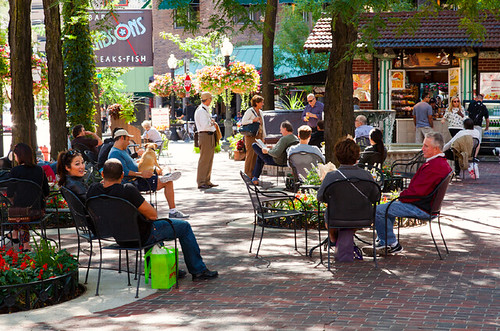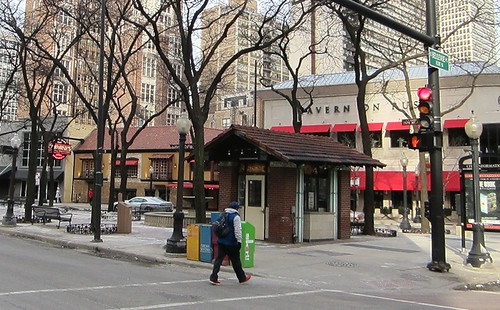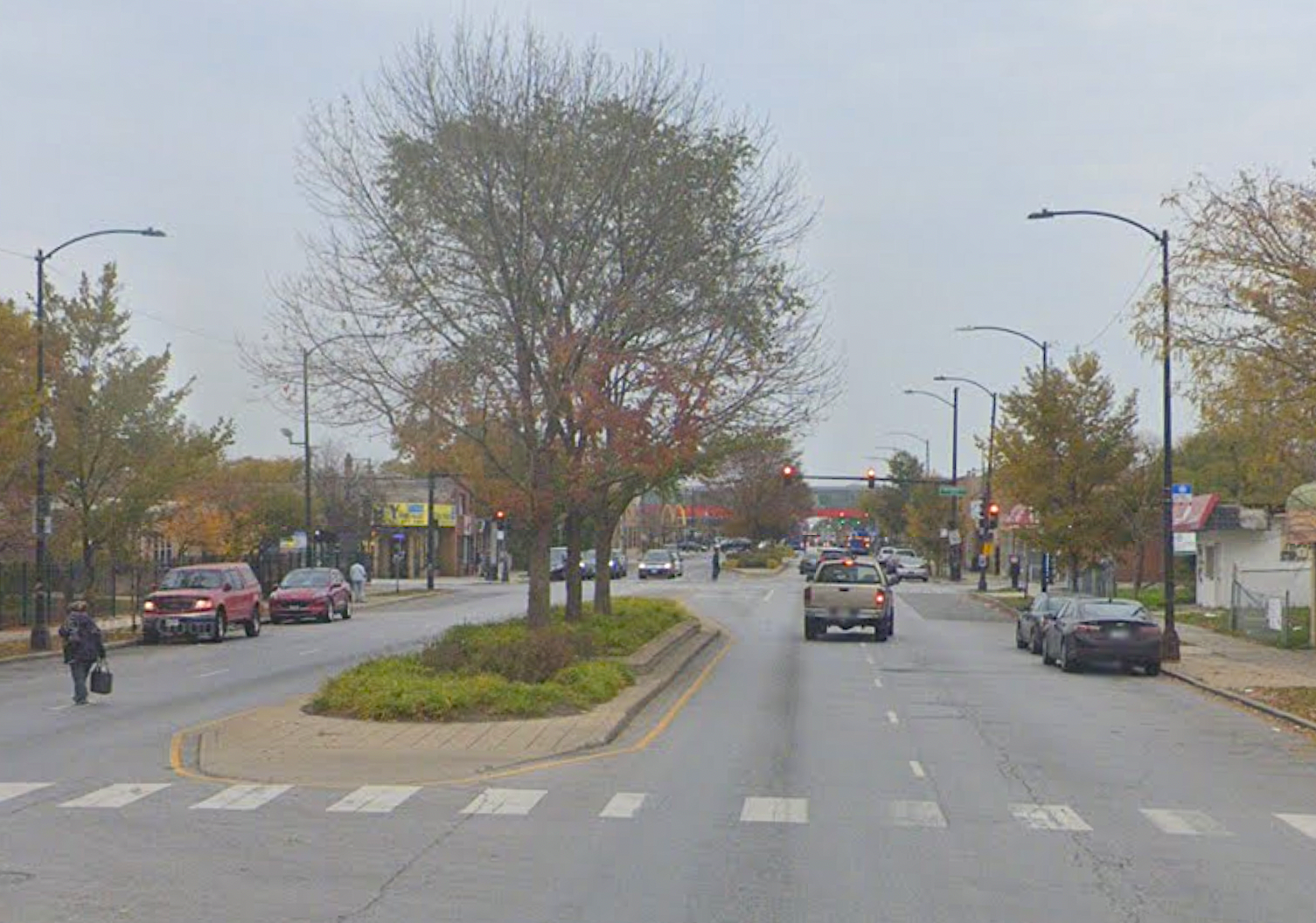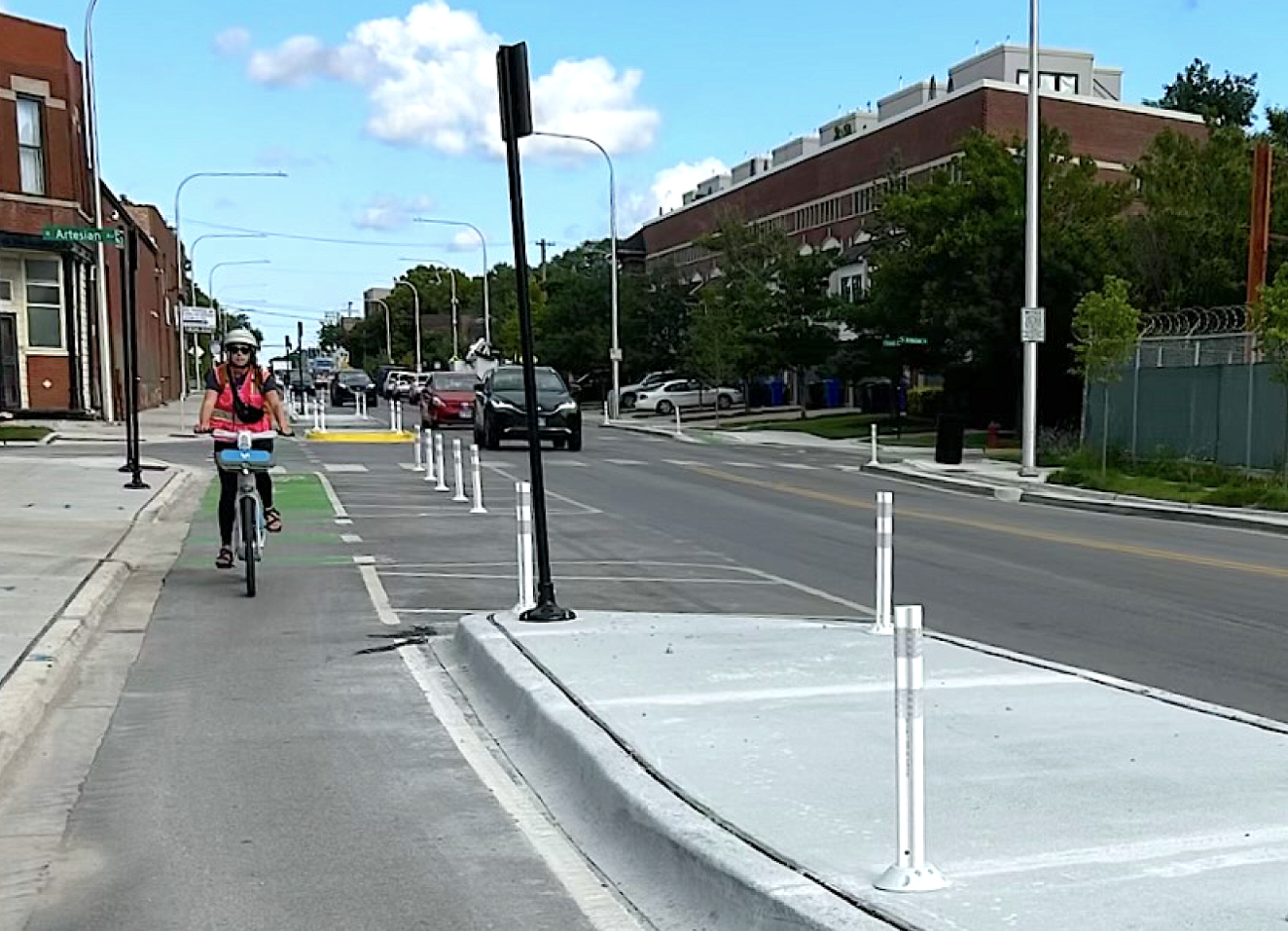The Active Transportation Alliance’s recent call for 20 Chicago streets to be considered for partial or total pedestrianization has definitely got people talking. One idea that already has a bit of traction is pedestrianizing the upscale Gold Coast nightlife area centered around three-sided Mariano Park. This district, bounded by State, Rush, and Bellvue, is nicknamed the Viagra Triangle because it’s a popular place for well-heeled older gents to take their dates, lined with upscale venues like Tavern on Rush and Gibson’s steakhouse.
Active Trans boldly included the nearby Magnificent Mile as a potential candidate for pedestrianization, and the list also included a call for creating car-free space on “segments of Rush Street in the Gold Coast.” The day after 42nd Ward Alderman Brendan Reilly told the Sun-Times it would be “irresponsible” to permanently close the Mag Mile to car traffic, he tweeted a request for input on the topic, prompting a response from former Illinois treasurer Alexi Giannoulias:
Close off the Triangle on weekends "@AldReilly: There's a proposal to ban vehicles...to create a pedestrian-only mall. What do you think?”
— Alexi Giannoulias (@Giannoulias) February 13, 2014
When I contacted Giannoulis via Twitter for clarification last week, I didn’t get a response, which wasn’t surprising because it was only a few days after he’d gotten married. However, it’s safe to assume he was talking about pedestrianizing the three streets bordering Mariano Park.
The idea makes plenty of sense. Pedestrianizing streets works best in areas that already have thriving retail. That’s certainly the case with the Viagra Triangle, which is lined with at least eight bars and restaurants with outdoor seating. During the summer, the small park is one of the city’s most successful public spaces, with tall trees, a fountain, a gelato stand, and plenty of tables and chairs drawing dozens of people at a time.
Closing one or more of the streets to cars could improve safety in a location where 19 people on foot and seven cyclists were injured by drivers between 2005 and 2012, according to Illinois Department of Transportation data. The pedestrianized streets would make it easier to access the park and provide additional space for people to socialize. Fewer cars in the vicinity would mean a more relaxing environment for customers at the many sidewalk cafes, and perhaps some of the extra room on the street could be used for additional seating, which would mean more revenue for the businesses.
View Larger Map
Senior mayoral advisor David Spielfogel, who told the Sun-Times that totally pedestrianizing major Chicago streets is a non-starter, tweeted his support for Giannoulias’s more modest proposal.
“Frankly, this is exactly the kind of conversation that we hoped would come out of our proposal,” Active Trans director Ron Burke told me. “A weekend closure of the streets around the park could be a good way to test the waters for making a street car-free and could hopefully be expanded from there. There’s potential all over the city to create exciting, liberating car-free spaces that are good for businesses and the community.”
A manager at Carmine’s Clam House, across the street from the park on Rush, who declined to provide his name, told me many customers valet park their cars in front of the restaurant or arrive by taxi, and he was curious how street closures would affect access. It would be fairly simple for drop-offs to be done on the side streets off of the triangle: Maple, Cedar and Bellevue.
When Morton’s steakhouse, just west of the park on Maple, held a block party on Maple to celebrate an anniversary, its valet stand was simply relocated west of the barricades, according to Mario Gonzalez, owner of Blue Agave tequila bar, located downstairs from the steakhouse. He said the street closure benefited his business, since it made room for some 500 revelers, who also spent money at his bar.
Even if valet and taxi access to the district becomes slightly less convenient, Gonzalez thought pedestrianizing the triangle could potentially work. “These are destination restaurants so people will still go there, even if they have to walk a bit further.”
Passing by the park in chilly weather yesterday, lawyer Morgan Shapiro told me she thought pedestrianizing the triangle could work well during the warmer months, if not the winter. Her colleague Amanda Delaney agreed. “It’s a cool idea because it would give the park a kind of European piazza feel and it would be less isolated, because I think many people are unaware that it’s an option,” she said. “They’re can’t really see that this guy is selling gelato and stuff because of the parked cars. If you pedestrianized it, it might attract more people to the area and be good for business.”






